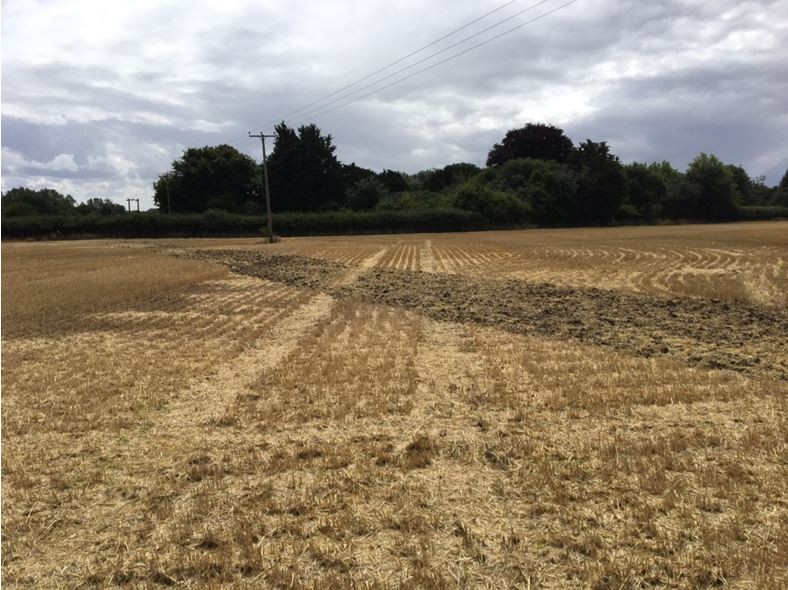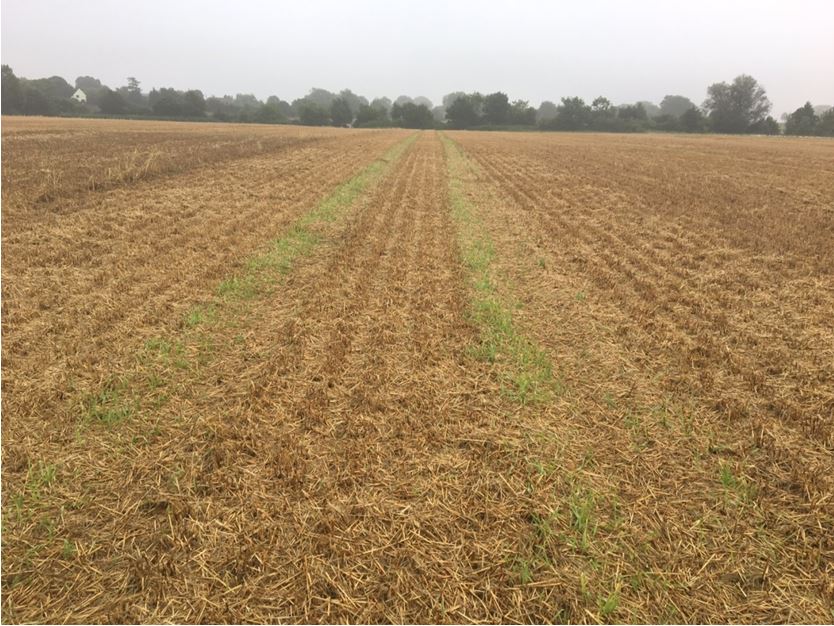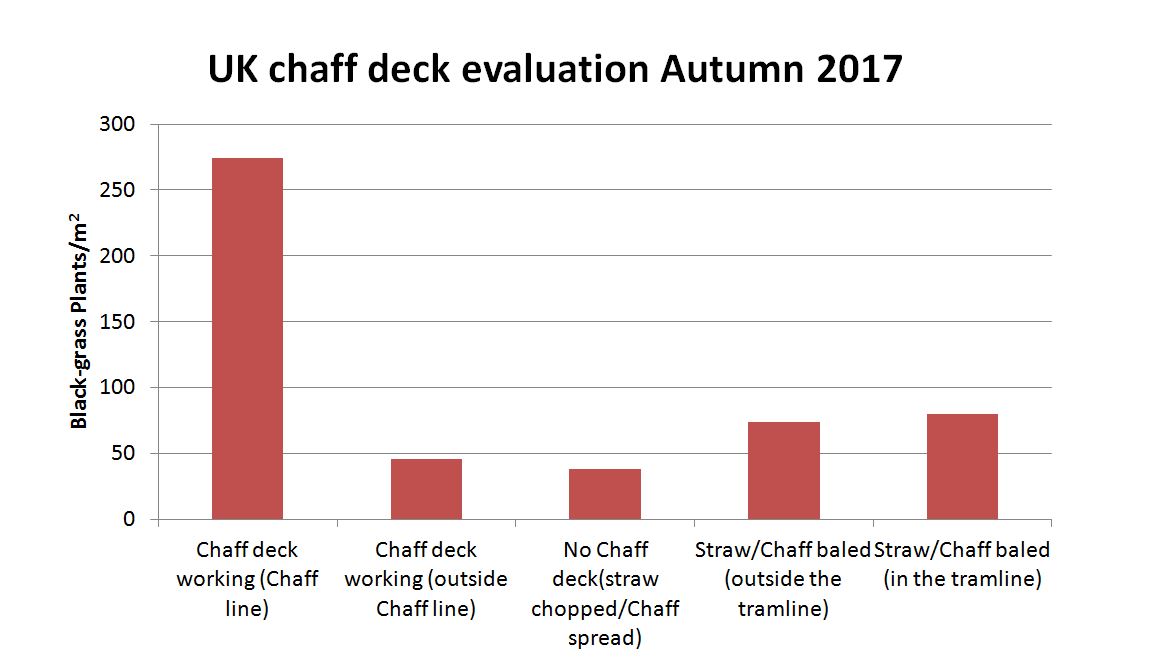Has tram lining weed seed brought something new to the party when it comes to black-grass management?
Five months on since harvest feels like a good time to review what, if anything, tram lining has added to the armoury when it comes to the management of black-grass.By way of a re-cap, Frontier Agriculture, in collaboration with EW Davies farms Ltd, Rothamsted, AHDB and Primary Sales from Western Australia, installed a 'chaff deck' onto farmer Jeremy Durrant's Lexion 780 prior to harvest 2017. For more details read controlling black-grass with a cultural method - is that possible?
The first key question was would the chaff deck work under UK conditions?
The answer is a resounding yes. Jeremy cut 1,250 hectares in harvest 2017 using the chaff deck across winter wheat, oilseed rape, spring and winter barley, spring and winter oats, linseed and beans with not a single block or issue.
What did we learn in terms of black-grass seed management?
The main trial site used was cropped with winter barley CV Volume.The average background black-grass population prior to harvest was 219 plants/m2, with the crop harvested on 14th July 2017. It was estimated that at the time of harvest 30-50% of the black-grass seed was retained in the ear, which was higher than anticipated given current knowledge on how black-grass sheds its seed from the base up as it matures. Figure 1 shows the consolidated chaff, black-grass seed plus any grain that came out of the back of the combine.
Within 11 days of harvest it was clear to see the volunteer barley plants germinating within the chaff tram lines, demonstrated in Figure 2. This initial relative rapid germination of volunteer barley plants may have been a direct result of their greater specific weight relative to the black-grass seed and chaff, and the fact that they fell to the base of the chaff line and had better contact with the soil and available moisture. The volunteer barley plants were sprayed off with propaquizafop to prevent them competing both with the oilseed rape crop and any emerging black-grass.
A noticeable observation within the first few weeks post-harvest was that chaff in the tram line itself seemed to sit slightly proud of the soil surface and afforded a drier microclimate relative to the rest of the field. A following oilseed rape was established with minimal soil disturbance, with the seed applied to the soil surface and followed up with a straw rake and rolls to create a shallow tilth. Black-grass plant scores were made at the start of October within the standing oilseed rape crop, with initially quite encouraging results as seen in Figure 3.The field has subsequently been subject to normal agricultural practice with no special treatments applied to the chaff tram lines. Practice in Australia varies, some farmers are leaving the concentrated weed seed to decompose in the chaff tram lines and others are using concentrated pre-mix program only on the tram lines. The plan is to build on these encouraging results next year.
A final point: the trial this year was evaluated under a controlled traffic system (CTF), with everything operated on 12m spacings. However, CTF is not a prerequisite requirement to allow the use of chaff decks for tram lining. Provided the same combining lines are maintained year-on-year the system will work on your farm. In Australia, it is reported that a significant number of growers use chaff deck tram lining as a means of managing resistant grass weeds and also carry out post-harvest cultivations, more often than not, at a different angle of travel to the combine swaths.In this trial we looked at the impact of a shallow post-harvest cultivation. In Figure 4, it's clear to see that cultivation had minimal impact on the placed chaff line.
Has chaff lining brought something new to the party when it comes to black-grass management?
While still early days, initial results are encouraging. We know that there are no "silver bullets" out there and that sustainable black-grass management requires a fully integrated approach. However, harvest weed seed management and the use of chaff decks for tram lining may be one additional novel approach that we can add to the tool box.
See chaff deck at LAMMA
Chaff deck will be on display at LAMMA on 17th & 18th January 2018 on Stand B40 (Horsch stand) and is shortlisted for an innovation award at this event.
(Best New Product or Innovation - Environmental - The IAgrE Ivel Award).
Dr Paul Fogg
Crop production technical lead
For specific advice for your business related to this blog or any other aspect of crop production get in touch with Frontier.
As a subscriber, you’ll receive email alerts each time a new blog is published so you can always stay updated with the latest advice and insights from our experts








Comments 1
Very interesting work, it will be enlightening seeing future results